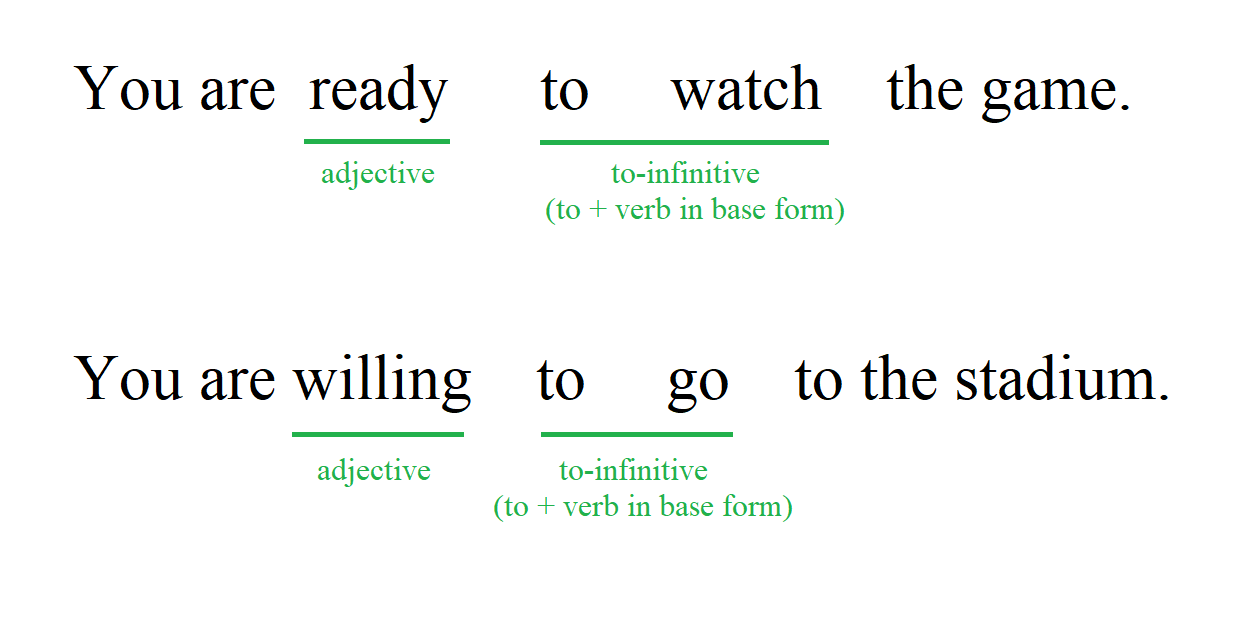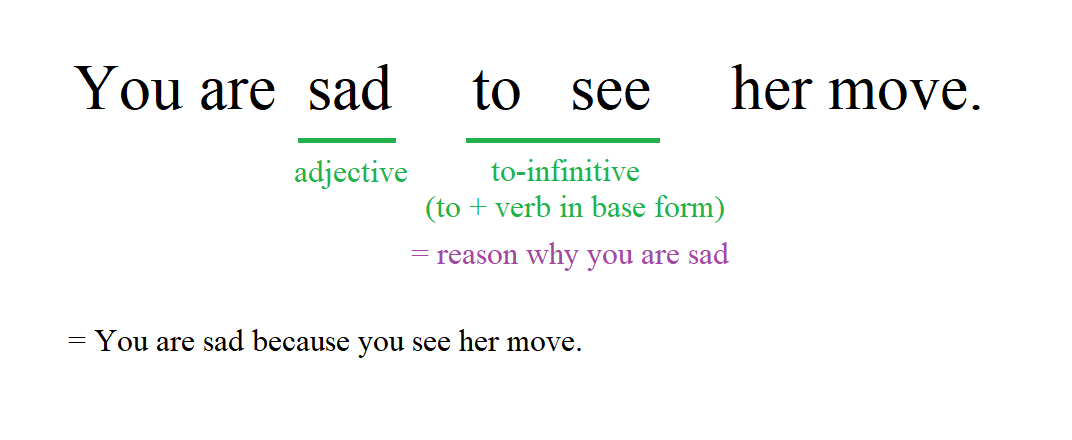Adjective + To-infinitive
- The adjective + to-infinitive pattern is used to describe targets or reasons for feelings.
- To-infinitive means "to" + the base form of a verb.
- Common patterns are: "ready to", "happy to", "easy to", "sad to".
In English, we often use adjectives followed by a "to-infinitive" to describe targets of actions or reasons for feelings. Understanding these patterns helps us express our thoughts more clearly.
Common Adjective + To-Infinitive Patterns
To-infinitive is "to" + verb in base form. You can put a to-infinitive after an adjective to describe the target of the adjective.
For example, "I'm ready to swim" - "to swim" (to-infinitive) is what you are ready for.

Here are some common adjective + to-infinitive patterns:
- Ready to - used when someone is prepared for something.
- Able to - used when someone can do something.
- Easy to - used when something is not difficult to do.
Examples:
-
I am ready to go.
Subject ("I") + adjective ("ready") + to-infinitive ("to go").
-
This book is easy to read.
Subject ("This book") + adjective ("easy") + to-infinitive ("to read").
You can also put a to-infinitive after a feeling adjective to describe the reason for that feeling.
For example, "I'm sad to see my friend leave the city." - "to see my friend leave the city" is why you are sad.

Here are some examples using this pattern:
- Sad to - used when someone feels unhappy or disappointed to do something.
- Happy to - used when someone feels pleasure or satisfaction to do something.
- Sorry to - used when someone is feeling sorry because of something.
Examples:
-
She is happy to help you.
Subject ("She") + adjective ("happy") + to-infinitive ("to help you").
-
He was sad to leave.
Subject ("He") + adjective ("sad") + to-infinitive ("to leave").
Using these patterns helps you express your feelings and intentions more clearly. Practice using these examples, and soon, you'll be more comfortable with adjective + to-infinitive patterns.
Pratiquez ce sujet avec le AI English Tutor
AI English Tutor vous apprendra la grammaire et la pratiquera avec vous sous forme de conversation. De plus, plus de 100 questions pratiques sur ce sujet pour consolider votre compréhension.
Essayez ALULA gratuitement sur votre téléphone ou votre tablette








Avez-vous des questions sur cette leçon ? Posez-les dans la section des commentaires, ci-dessous.